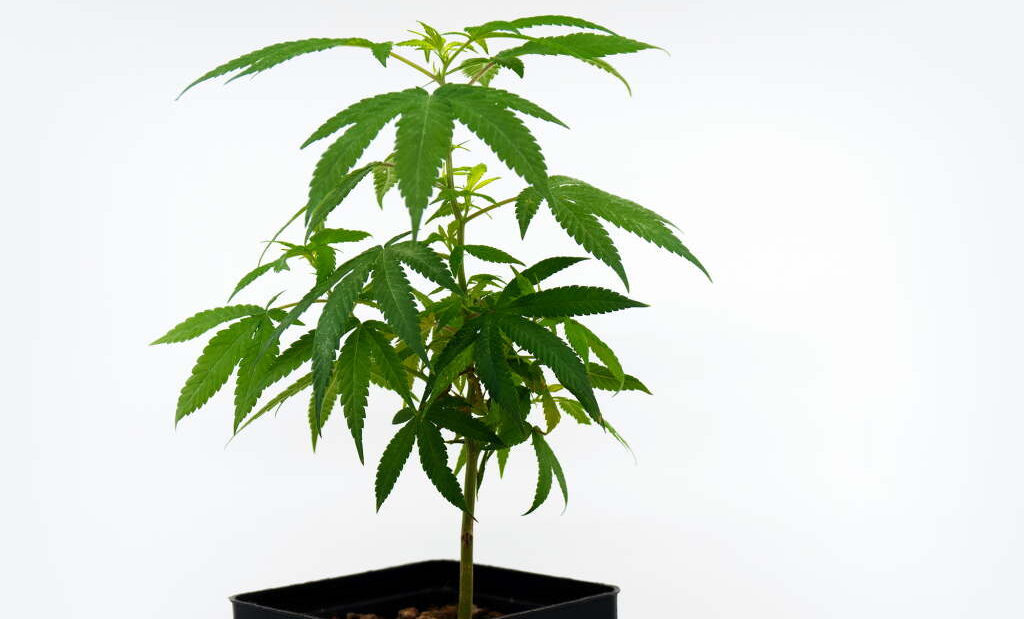
In our webshop we sell not only harvested and processed CBD products, but it also has cuttings or already somewhat larger young plants on offer. With these, you can grow your own CBD flowers. In this post we explain how to plant hemp best.
From cutting to young plant
When the cuttings have arrived, they need to be transplanted into a larger pot. In this case, it is worth using a good organic soil from a specialty store. Potted cuttings grow best with plenty of light and at a temperature of 15-21 degrees. High humidity pleases the hemp plants.
After about 2-4 weeks, the plants should be large enough and well rooted so that they can be planted out.
Plant hemp
Well-rooted seedlings (purchased or home-grown) can be planted outside as outdoor plants. Preferably right into a garden bed or anywhere else in the garden. A large pot is also a possibility, but the plant will be limited in its growth.
Plants should be planted outside no earlier than May 20. Advanced growers can dare to do it earlier, but if possible, the hemp plants should not be exposed to frost.
Another important note: slugs love young hemp plants! So a snail-free location is of great advantage.
Light requirement
Light conditions greatly affect the plant, so you should pay attention to this issue.
To grow, the plants need at least 18h of good (rather blue) light a day. The formation of flowers occurs at 12h of darkness and 12h of light during the day, with the dark phase being decisive. In outdoor cultivation, the flowering phase is initiated by itself due to the shorter days.
Water requirement
Hemp plants basically have a high water requirement. The exact amount depends on many factors such as plant size, temperature, humidity, location (and pot size). The plant copes better with too much water than with too little.
The simplest indicator is the color and consistency of the soil. It should always be a little dark and in any case not become hard and brittle.
If the leaves hang limply down it needs more water.
Potted plants need liquid more often. Drip trays should be emptied after watering or omitted altogether. Stagnant water is never good because the roots do not get enough oxygen.


Nutrient requirements
In good soil hemp grows even without additional fertilizer. However, fertilizer can accelerate the growth and increase the yield. Our recommendation: the fertilizer from Biobizz, which is available for purchase in our store.
The leaves show how the nutrient supply of the plant is:
Very dark, almost somewhat purple leaves that curl downward and show brown spots indicate overfertilization. The plant has too much nutrients.
A well-supplied plant will have leaves that are a dark, rich green based on the light.
Light green leaves that tend to droop downward show that some fertilizer could be added. When the edges of the leaves become quite light, dark veins appear and the leaves curl upwards the plant needs a fertilizer.



Climate conditions
During the growth phase, the plant thrives best with high humidity and temperatures between 15 and 21 degrees.
Towards the end of the flowering period you need to be careful not to mold the flowers, too much moisture is not good. Potted plants can be protected from rain. In the garden, there is little choice but to check the plants regularly and harvest them immediately at the first infestation.
More generally, diseased leaves (fungi such as powdery mildew or mold or pest infestation) should be removed quickly in each case, thus preventing or at least slowing down the spread.
Harvest
The flowers are harvested when about three quarters of the flower hairs are brown and the rest is still white.
To harvest, the plant is cut, the large leaves are plucked off and the remaining whole plant is hung in a dry and well-ventilated place.
Flowers that are too dry very quickly disintegrate into dust while moist flowers have a high risk of mold.

More on the topic:
– Detailed wiki on hemp cultivation: irierebel.com




